Features of plaster molding
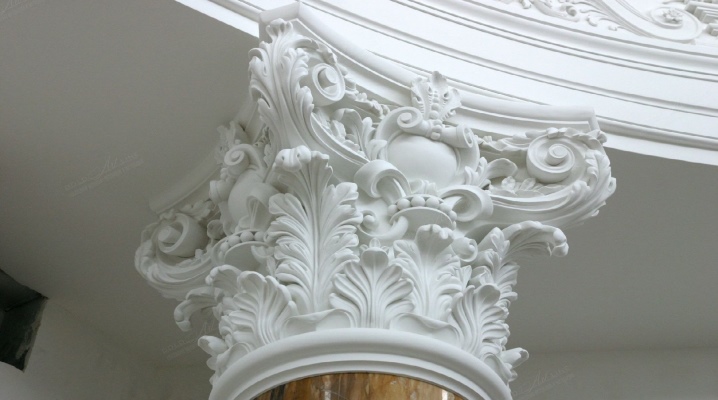
Gypsum decor is in great demand in modern design, as it is represented by a huge variety and looks chic in rooms decorated in any style direction. To decorate the interior of the room with relief stucco in an original way, it is not necessary to order individual production or buy ready-made plaster elements.
They can be easily fashioned with your own hands at home using simple tools.
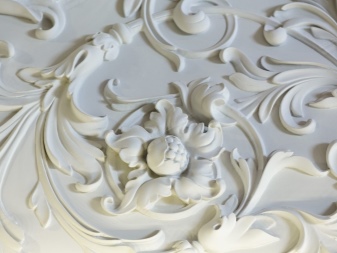
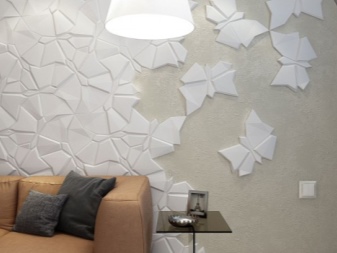
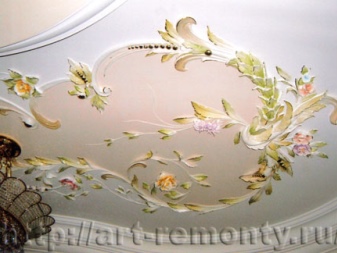

Advantages and disadvantages
Currently, gypsum stucco molding has found wide application in the interior design of both city apartments and country houses. Most often, the surfaces of the walls and ceilings of rooms are decorated with such decor, having previously selected a design taking into account the general style of the premises. The main advantages of this type of decorative finish include a number of characteristics:
- has a clear relief and perfect edges;
- made from environmentally friendly material;
- refractory;
- resistant to temperature changes;
- easy to process;
- subject to restoration - during operation, defects that appear on the surface are easily eliminated;
- characterized by a long service life;
- can be painted in any color scheme, which makes it possible to translate any design ideas into reality.

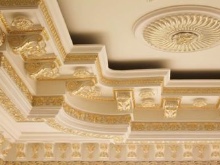
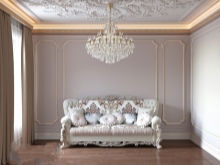
As for the shortcomings, there are few of them. Gypsum elements are unstable to mechanical stress, because of the significant weight, decorative items are difficult to attach to surfaces.
In addition, gypsum stucco molding requires certain financial and time costs.
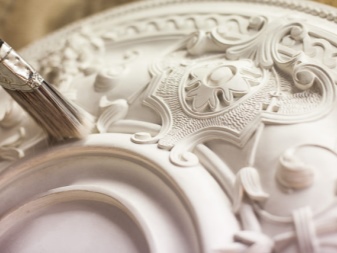
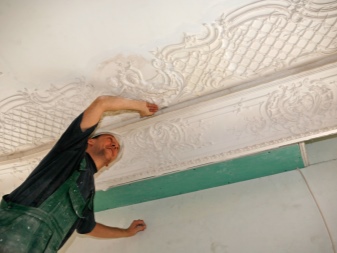
Views
The scope of gypsum stucco molding is quite extensive. Most often it is made to decorate modern interiors in spacious rooms. Plaster moldings are commonly used to decorate surfaces such as walls and ceilings. At the same time, for their design, use different types, which are characterized by their own characteristics.
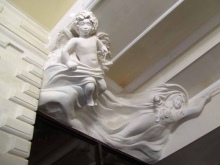
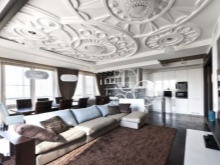
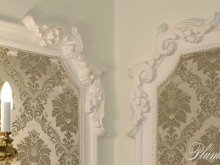
For walls
This type of surface is usually decorated with plaster elements such as rosettes, consoles, panels and capitals. Other types of plaster decor look beautiful in a modern interior.
- Bas-reliefs. They are a convex image on a plane, which often becomes the center of the overall composition.
- Niches... These recesses in the walls not only serve as a decorative function, but are also used to accommodate cabinets, shelves and shelves of various sizes.
- Brackets. Used to fix columns and other decorative items to the wall surface.
- Panel. They are represented by a huge variety of plots and allow one of the walls in the interior of the room to be distinguished in a special way. In addition, with the help of the panel, you can hide the unevenness of the surfaces.
- Gables. They are mainly installed over cabinets built into the wall, openings of doors, windows, arches. The only thing is that, due to their volumetric shape, they cannot always be used in small rooms. They are best used when decorating spacious rooms.
- 3D panels... They are considered the main trend in modern interiors. They are used for wall decoration to give the latter an interesting texture and expressiveness. Such panels are painted in different colors. They look especially gorgeous with backlighting, which gives them three-dimensionality.
- Arch... Openings are decorated with this decorative element, niches are beautifully decorated and space is zoned.In the classic version, the arch looks like an arc, but there are also options with a square or any other shape.
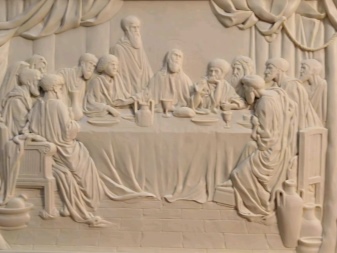
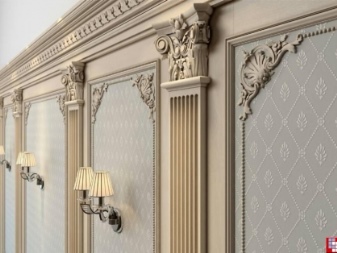
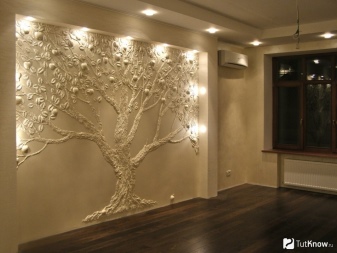
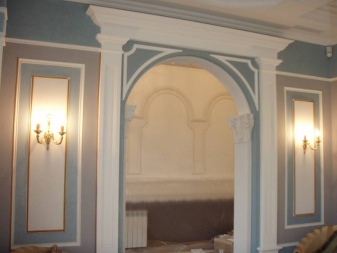
For ceiling
This type of surface can be decorated with various types of gypsum stucco molding. Usually ceilings are decorated with cornices, they are used to create transitions between different planes. These elements can have both embossed and smooth surfaces. In order to favorably emphasize the beauty of the curtain rods in the interior, they are supplemented with various sources of lighting, for example, LED strip. Other elements are also widely used in the decoration of ceilings.
- Moldings. They allow you to give a complete look to the interior. Smooth surface moldings are usually chosen for high-tech and classic rooms. Elements with ornaments are ideal for rooms decorated in stylistic directions such as Art Deco and Baroque.
- Corners... They are used as an additional decorative element to moldings and cornices, while having a pattern similar to them.
- Consoles... They allow you to delimit the ceiling space and are used simultaneously with cornices. As a result, the illusion of supporting the ceiling beams is created.
- Sockets... They are placed in the place where the chandelier is hung. Round and oval rosettes with various decor can be sculpted from plaster.
- Domes. They are made in the form of hemispheres and allow you to change the visual perception of the room, since they form a characteristic domed recess in the ceiling. Sometimes a lamp is placed in the central part of the dome. Domes with a suspension system look gorgeous.
- Panels and bas-reliefs... They are used to create a certain plot on the ceiling, often act as a separate part of a complex ornament.
- Skirting board. Has the shape of a rectangle or square. It is used for zoning the ceiling surface with walls, giving the surface greater volume and depth. The skirting boards give the room a solid look.

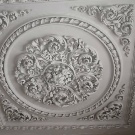
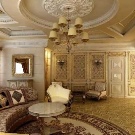
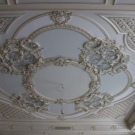
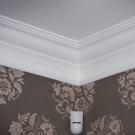

Design
With the help of plaster moldings, you can decorate rooms in any style direction, for each of which you should choose a certain stucco decor. Let's take a look at the most popular styles.
- Roman. It is characterized by an abundant amount of stucco molding, it can be used for the original decoration of ceilings and walls. In this case, the ornament in the room should be kept in the same design. In the Roman style, stucco moldings with animalistic ornaments and patterns with plant motifs in a snow-white color prevail. This design is ideal for spacious rooms; in small apartments, in order to save space, semi-columns are usually installed, which are decorated with small patterns.
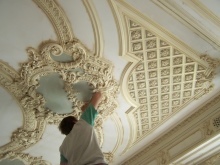
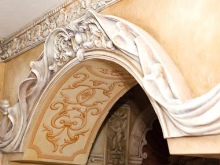

- Art deco... Presented by a chic design of stucco moldings made of plaster. At the same time, the walls and ceiling can be decorated with different types of stucco moldings. This style provides for a combination of stucco molding with wood, leather and bronze elements. Often, decorative elements are complemented with velvet fabrics. The stucco molding here is characterized by the presence of clear geometric details, graceful curves and interweaving of various silhouettes.


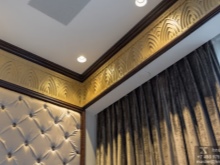
- Baroque... Rooms decorated in this style are distinguished by formality and splendor. To decorate surfaces, gypsum stucco molding is used, made in the form of miniature sculptures, domes and colonnades - they visually expand the space. The interior of the Baroque is dominated by pastel colors, plaster elements are characterized by plasticity, dynamism of forms, bends, curvilinearity, and an abundance of patterns.
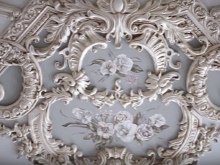
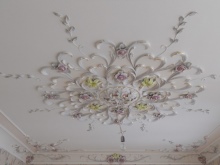
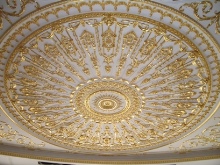
- Empire style. Monumentality and austere design prevail in this style, therefore stucco molding in rooms decorated in this style occupies one of the main places. Thanks to the plaster elements, the interior takes on a complete look. The stucco molding in the Empire style is represented by a military theme; images of eagles, swords, laurel wreaths and mythological creatures are often found.
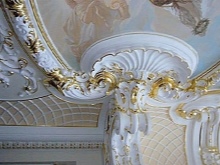
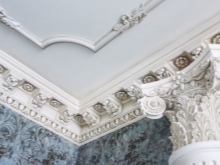

- Classic style... In modern classics, there is stucco molding, which allows you to maintain the main line. As a rule, porticos, sculptures, columns and narrow cornices of regular geometric shape are installed in rooms decorated in a classical style.
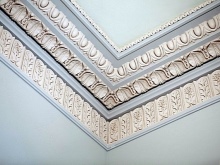


- Renaissance. This direction is closely related to romanticism and provides for the installation of multi-level ceiling structures in the premises, which are decorated with plaster moldings. Plaster elements are characterized by symmetry, orderliness, precise geometric lines and golden color.
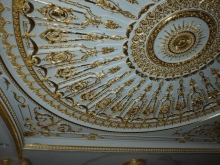

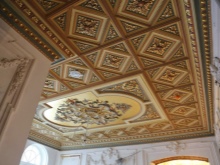
Popular manufacturers
Today, gypsum stucco molding is represented by various global brands, the most popular of which are: Mithril (Malaysia) and Orac Decor (Belgium). The production of unique decorative elements from plaster for the decoration of ceilings and walls is also carried out by the Russian factory "Europlast".
Her products are beautifully designed with imitation of various materials that look gorgeous in any style.
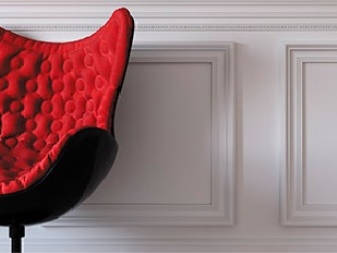
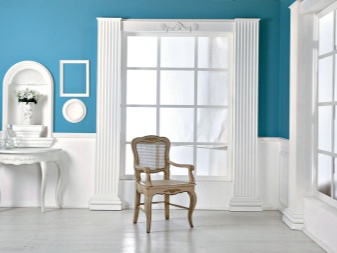
How to do it yourself?
Stucco molding can be bought ready-made, but many people prefer to make it on their own, since manual work allows you to embody any design idea into reality, giving individuality and originality to the interior of the rooms.
Before you start making a product, you need to choose the right raw materials, the quality of which will then directly depend on the service life and aesthetic appearance of the jewelry. Experts advise to purchase alabaster stamps for work from G5 to G25. If you plan to make large elements, then the material of the G7 brand is well suited. When buying gypsum by weight, you need to make sure that there are no admixtures of sand and caked lumps in it.

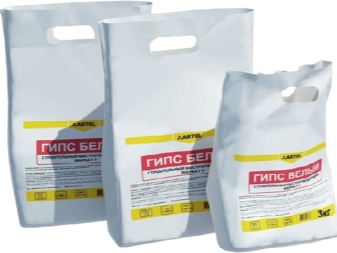
After the issue with the choice of material has been resolved, you can proceed to the direct modeling process, sequentially performing several points.
- Preparation. First of all, it is worth deciding on the model of future parts and their dimensions. In addition, you need to decide in which part of the room and on which surface the plaster decor will be placed. Paper sketches will help to simplify the task; from them it will be possible to sculpt a model from plasticine. Then the preparation of the place where the modeling will take place is carried out. For this, a table or other flat surface is selected, the floors are covered with foil.
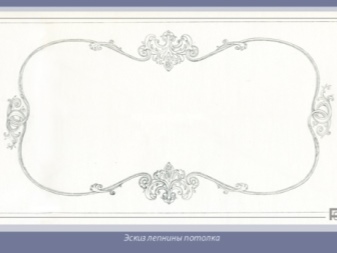
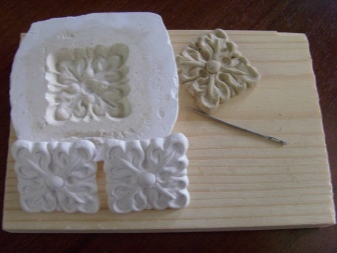
- Form making. To make molds at home, you need to have on hand silicone, plasterboard, a stationery knife, a measuring container, a narrow brush and a masking net. Since the stucco molding should look beautiful after installation, you should choose the right matrix before filling it, while you cannot save money, since cheap templates can stretch and tear. Silicone molds are considered the best option. To make them yourself, the finished model is covered with a thin layer of silicone. After applying the first layer, reinforcement with a building mesh is performed, then the coating is repeated several more times. Each layer must dry for 3 hours, after which the workpiece is removed from the model. Now you can proceed directly to the plaster casting.
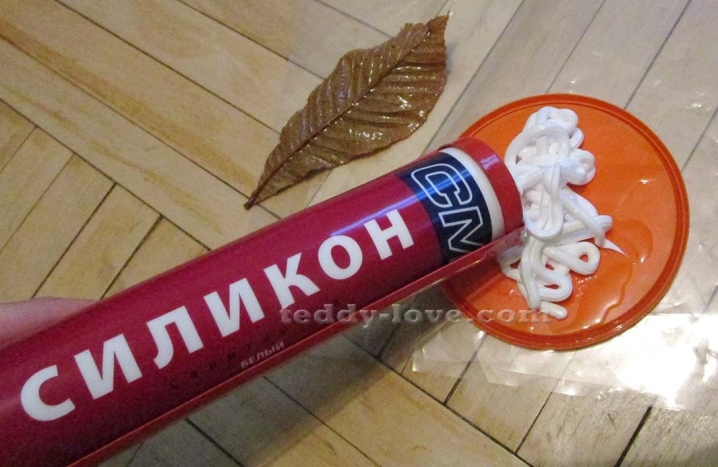
- Preparation of the solution. The technology for preparing a mixture of gypsum is quite simple. The main thing is to cook it in small parts by hand, otherwise the residual solution will quickly harden and you will just have to throw it away. First, water is poured into the prepared container, then powder is poured into it (you cannot do the opposite, since lumps can form). The ratio of alabaster and water should be 7: 10. Everything is thoroughly mixed until a homogeneous solution is obtained, which should have a consistency resembling liquid sour cream. To increase the strength of the gypsum, it is recommended to add cement to the solution, and to prevent the finished decorative product from cracking, PVA glue can be added to the solution.

- Creation of plaster elements... Molds are poured with the ready-made solution, it is best to do this in two stages: at the first, apply the first layer of gypsum with a brush, checking that no air bubbles form, at the second, fill the template with the solution to the brim. Large elements need to be additionally reinforced with reinforcement using a paint net. It is laid out in a mold after applying the first layer of the mixture. The solution is kept for 20 minutes, then the elements are carefully removed from the molds. The finished product is left for subsequent drying, which will take about a day.
The air temperature where the gypsum parts will be dried must be above +16 degrees Celsius.
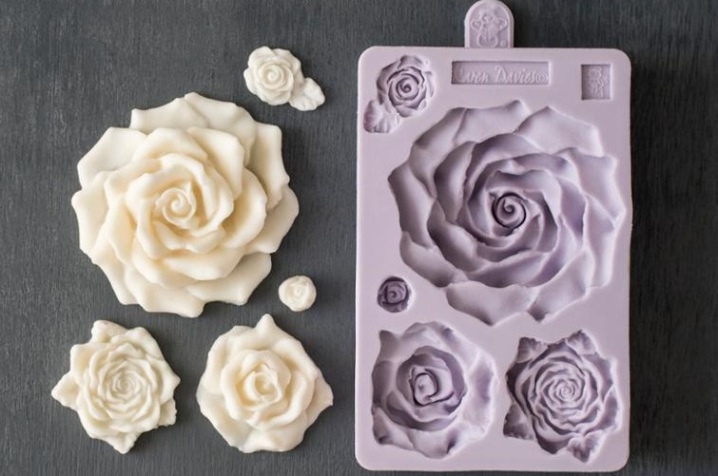
- Final work... At this stage, the part is sanded and all defects are cleaned. It is best to level the surface of gypsum elements with fine sandpaper, and this must be done carefully so as not to damage fragile parts. Then the elements are coated with a primer or colorless varnish. If the design of the room provides for decor, not necessarily in white, then the plaster stucco is painted in the desired shade with paint, which should be water-based.
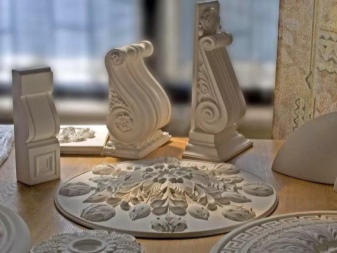
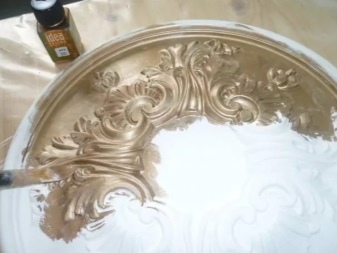
Installation tips
3 days after filling the figure with plaster, you can start installing it. You can fix medium-sized gypsum parts with an adhesive. NSYou can prepare glue from water and PVA glue, observing a ratio of 1.5 to 1. Installation begins with the application of an adhesive to the finished part and the surface to be decorated. After that, everything is connected, and the remnants of the glue are removed with a spatula. It remains only to seal the joints with plaster mortar.
Volumetric figures have a lot of weight, so when installing them you need to additionally "put" on the dowels. To do this, holes are drilled in the plaster parts, and screws are screwed through them. The grooves that have turned out are carefully covered with a plaster mixture and polished. The result is an unusual decor that fills the home with an atmosphere of comfort and chic.
Volumetric plaster compositions will fill the space of rooms with a special mood and will be harmoniously combined with other interior items.
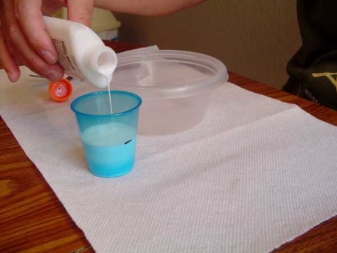

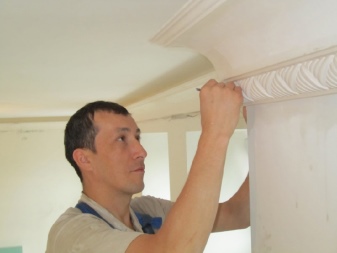
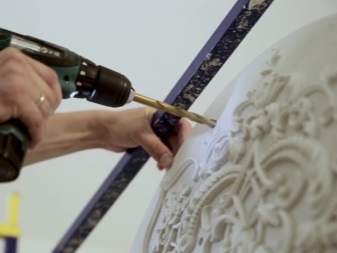
Beautiful examples
Plaster stucco molding occupies a special place in modern home design, most often it is used to decorate the ceilings and walls in the living room, bedroom and kitchen. This interesting type of design is also suitable for finishing decorative items such as fireplaces. When creating an original design in rooms, experts recommend using plaster stucco molding as shown in the examples.
- Gilded stucco molding in the interior of the living room. Thanks to her, the design of the room takes on an expensive and sophisticated look. It is advisable to choose gypsum elements with images of plants - it can be a vine, large flower buds. Stucco molding with abstraction will look no less interesting. For a greater effect, the decor elements must be coated in the color of the precious metal using gold foil. With gilded stucco molding, massive furniture from expensive woods, as well as textiles in warm shades, look beautiful in the interior.
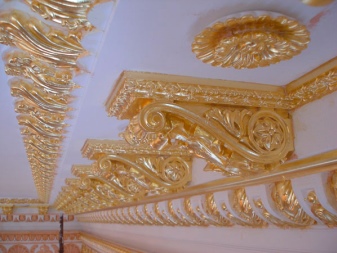
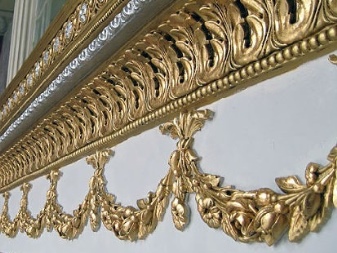
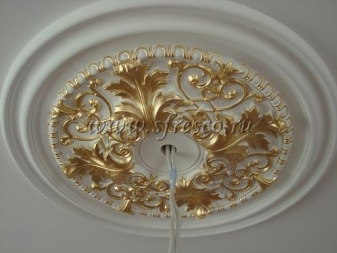
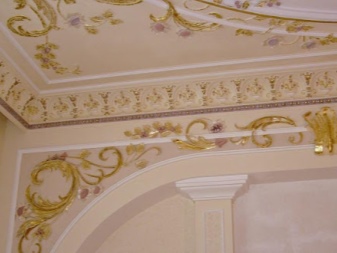
- Fireplace decoration. This decorative item is considered the main thing in the interior of the room, as it gives it an atmosphere of home warmth and comfort. To decorate the fireplace, you should choose stucco with sophisticated and original patterns. Its color should match the general palette in the room.
If the fireplace performs only a decorative function in the room, then the stucco molding can be additionally decorated with LED backlighting, which will favorably emphasize its beauty.
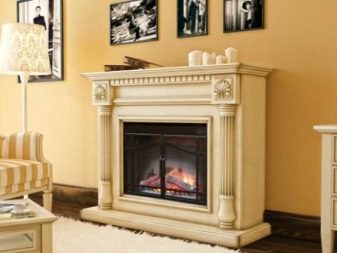
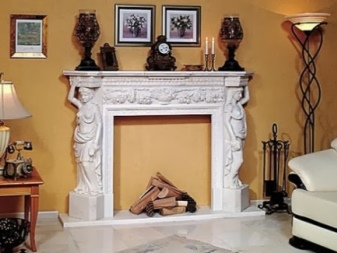

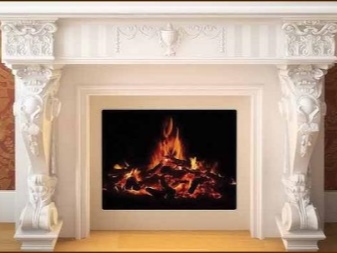
- Plaster decor in the nursery. Using plaster products and art painting, you can create a fabulous atmosphere in the baby's room. To do this, you need to sculpt characters from your favorite children's cartoons from plaster on the walls and ceiling, reviving them with a bright color. In order for the interior to acquire a complete look, it is also recommended to decorate the door and window openings with stucco molding.
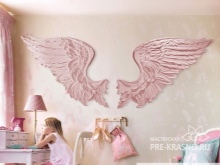
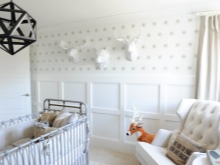
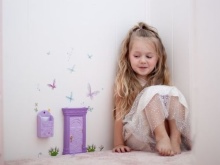
Care Tips
Plaster decor can deteriorate over time.To preserve its aesthetic appearance, timely restoration is carried out: cleaning, painting and repair. In some cases, a complete replacement of worn parts is carried out. Before proceeding with the restoration, it is worth assessing the type and scale of the work to be done, taking into account the degree of damage. If the gypsum stucco molding has just changed its color due to pollution and getting wet, then it is simply painted in a new color that matches the interior of the room. To do this, use a water-based paint.
To hide minor defects in the form of scratches, you can apply art painting, choosing oil paints. If a significant part of the decor has deteriorated, then it is recommended to carry out restoration work, sealing all seams and cracks with gypsum mortar. Weakly fixed figures are removed, then the base of the surface is leveled, then they are again fixed to it.
To increase the strength, you need to use a double fixing: dowels and glue.
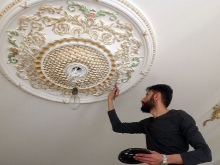
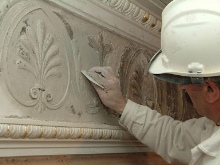
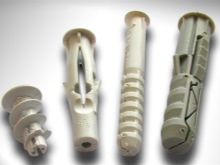
Novice masters should take into account the following recommendations of specialists when performing restoration:
- before restoring the lost original appearance of the embossed decoration, it is necessary clean it from dust and dirt;
- the surface of the elements that are planned to be re-painted with paint, it is necessary to free from old layers of emulsion and varnish;
- when chips appear on fragments of stucco molding gluing them, after which the subsequent restoration is performed.

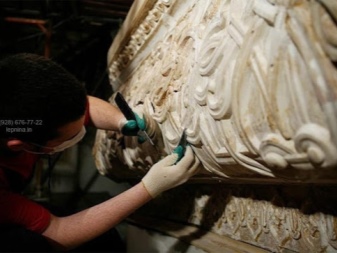
For information on how to make plaster molding with your own hands, see the next video.













The comment was sent successfully.